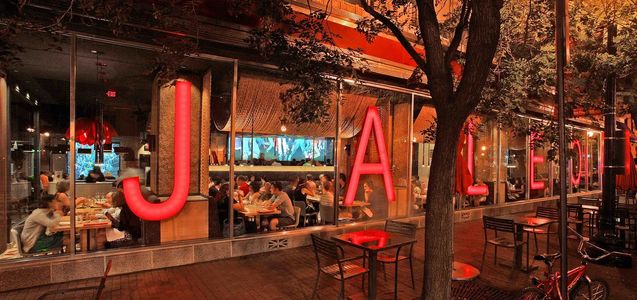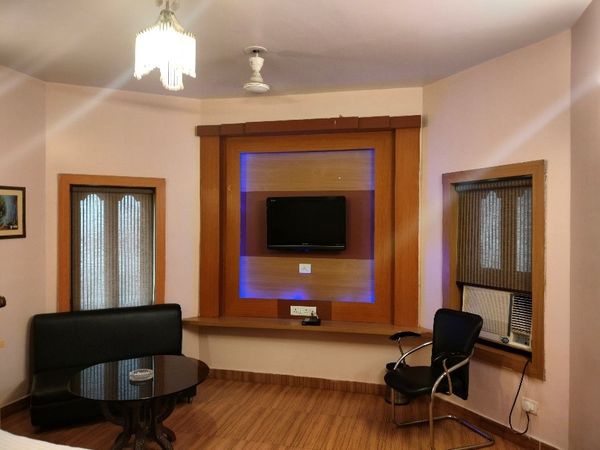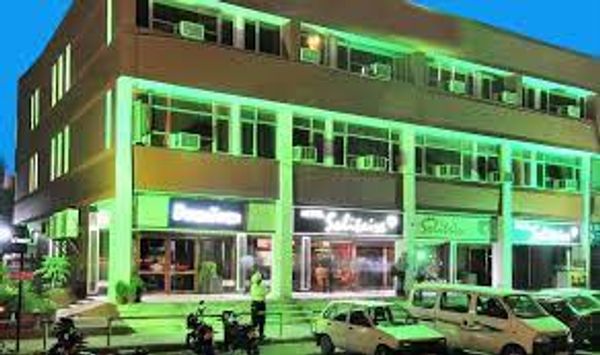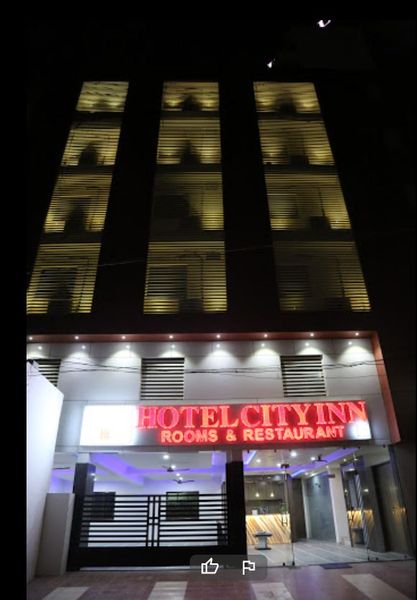Chicago’s Food Scene in Flux: What Jaleo’s Closure Tells Us About Dining Trends
 James Anderson
22 Jan, 2025
12 mins read
258
James Anderson
22 Jan, 2025
12 mins read
258

The winds of change are blowing through Chicago's renowned food scene. In recent years, the city’s culinary landscape has evolved in ways that both surprise and intrigue locals and visitors alike. One of the latest shifts comes with the closure of Jaleo, the celebrated tapas restaurant by renowned chef José Andrés. While closures of restaurants are nothing new, Jaleo’s closure has sparked a conversation about the broader dining trends in Chicago and how they reflect the city’s changing tastes and expectations.
But what does Jaleo’s closure really mean for Chicago’s dining future? Is it a sign of a larger trend towards casual dining and more accessible culinary experiences? In this article, we’ll explore how this iconic restaurant’s departure highlights the evolving food culture in Chicago and what other trends are shaping the city’s restaurant scene in 2025.
Jaleo’s Impact on Chicago’s Culinary Landscape
Jaleo first opened its doors in Chicago in 2018, bringing a taste of Spanish tapas and José Andrés' world-famous culinary innovation to the city. Known for its vibrant dishes, exceptional cocktails, and lively atmosphere, Jaleo quickly became a favorite among Chicago foodies and tourists. It wasn’t just another restaurant—it was a symbol of the city’s increasingly diverse and dynamic food culture.
But in January 2025, Jaleo announced it would be closing its Chicago location. The news came as a surprise to many, especially as the restaurant had garnered acclaim for its bold flavors and creativity. While the closure might seem like a loss for the culinary scene, it offers a glimpse into some of the larger shifts taking place within the food industry—not just in Chicago, but nationwide.
What Jaleo’s Closure Reveals About Dining Trends
The closure of Jaleo is far from an isolated incident. In fact, it’s indicative of several broader trends that are reshaping the dining scene in Chicago and beyond. Let's take a closer look at some of the key trends that may have contributed to this shift.
1. The Shift Toward Casual Dining
One of the most notable shifts in the dining world is the movement toward casual dining experiences. Over the past decade, there has been a marked decline in the demand for high-end, fine-dining establishments. Instead, diners are seeking more accessible, laid-back experiences without sacrificing quality.
The rise of casual dining doesn’t mean people aren’t looking for great food. On the contrary, diners still want delicious, inventive meals—but they’re less inclined to dress up for a five-course meal. Restaurants that offer gourmet flavors in a more approachable setting, such as gastropubs, food trucks, and fast-casual eateries, are flourishing in this new landscape.
In Chicago, we’re seeing a shift toward smaller, more intimate dining spots and a rise in innovative eateries that offer high-quality food at a fraction of the price of fine-dining institutions like Jaleo. This trend is reflected in the growing popularity of restaurants offering unique, regional cuisines, street food-inspired dishes, and sustainable, local ingredients.
2. A Focus on Local and Sustainable Dining
In recent years, Chicagoans have become more conscious of where their food comes from and how it’s produced. This growing focus on sustainability and locally sourced ingredients has influenced the types of dining experiences people are seeking.
Farm-to-table concepts are booming across the city, as restaurants emphasize locally sourced produce, meats, and artisanal products. This is part of a larger, national trend where diners want to know that the food they’re eating is not only delicious but also responsibly sourced and environmentally friendly.
Jaleo, with its global tapas offerings, may have been a bit removed from the farm-to-table trend, but the changing preferences of diners are undeniable. Many Chicagoans are looking for dining experiences that are in harmony with the city’s agricultural roots, featuring fresh, organic ingredients that support local farmers and reduce the carbon footprint of food production.
3. Technology and the Shift Toward Delivery
In 2025, technology plays an integral role in the way people experience food. From digital menus and contactless ordering to the rise of food delivery apps, technology is transforming the restaurant industry in Chicago and across the world.
Restaurants are now expected to offer more than just a traditional dining experience—they need to integrate technology in ways that make ordering and eating more convenient. The pandemic accelerated the adoption of delivery services, and now, even as the world begins to recover, people still prefer the ease of having food delivered straight to their doorsteps.
As restaurants like Jaleo close their doors, new, tech-savvy establishments are rising to meet these demands. Chicago’s thriving food delivery scene reflects this, with many new restaurants offering seamless delivery and takeout options, making it easier than ever to enjoy gourmet meals from the comfort of your own home.
4. Economic Factors and Shifting Consumer Expectations
The rise of inflation and economic pressures in 2025 have forced many restaurants to rethink their business models. The cost of ingredients, labor, and overhead have all increased, and as a result, many high-end establishments are struggling to maintain profitability.
Consumers are also becoming more budget-conscious, especially after the economic downturn of the last few years. As dining costs rise, people are increasingly looking for meals that are both affordable and satisfying. This shift is driving the popularity of more casual, less expensive dining options, further contributing to the closure of fine-dining spots like Jaleo.
What Jaleo’s Closure Means for Chicago’s Culinary Future
While Jaleo’s departure marks the end of an era, it also signals the beginning of a new chapter in Chicago’s food scene. The shift towards casual dining, sustainability, and tech-driven services will likely continue to shape the city’s culinary landscape in the years to come.
Restaurants that can adapt to these changing trends—offering creative, high-quality food in a more accessible and sustainable way—will thrive. At the same time, innovation will remain a key factor in the city’s dining future. New concepts will continue to emerge, reflecting the city’s diverse population and its ever-evolving tastes.
The Role of Innovation in Chicago’s Food Scene
Chicago’s food scene has always been known for its innovation. From classic deep-dish pizza to Michelin-starred dining, the city has continually pushed the envelope when it comes to culinary creativity. As the city moves further into 2025 and beyond, we can expect this tradition of innovation to continue.
New dining concepts, food pairings, and experimental cooking techniques will continue to emerge. Whether it’s a new take on Chicago-style hot dogs or a cutting-edge, sustainable restaurant concept, the future of Chicago’s dining scene is sure to be exciting and diverse.
Technology and the Shift Toward Delivery
In 2025, technology plays an integral role in the way people experience food. From digital menus and contactless ordering to the rise of food delivery apps, technology is transforming the restaurant industry in Chicago and across the world.
Restaurants are now expected to offer more than just a traditional dining experience—they need to integrate technology in ways that make ordering and eating more convenient. The pandemic accelerated the adoption of delivery services, and now, even as the world begins to recover, people still prefer the ease of having food delivered straight to their doorsteps. This shift is further supported by convenience wholesalers who supply restaurants with the bulk ingredients and packaged products needed to meet the growing demand for delivery and takeout services.
As restaurants like Jaleo close their doors, new, tech-savvy establishments are rising to meet these demands. Chicago’s thriving food delivery scene reflects this, with many new restaurants offering seamless delivery and takeout options, making it easier than ever to enjoy gourmet meals from the comfort of your own home.
Conclusion: A Changing Landscape for Chicago’s Diners
The closure of Jaleo is just one example of how Chicago’s food scene is changing in 2025. With a shift toward casual dining, sustainable food practices, and tech-savvy services, the city’s culinary future is bright and full of possibilities. While we bid farewell to iconic establishments like Jaleo, we also look forward to the new, innovative restaurants that will shape Chicago’s next culinary chapter.
As diners, it’s important to embrace these changes and support the restaurants that are leading the charge toward a more sustainable, diverse, and accessible food culture. What’s next for Chicago’s dining scene? Only time will tell, but one thing is certain: Chicago will remain one of the best cities to explore the world’s most exciting flavors.
Written By:
James Anderson



Hotels at your convenience
Now choose your stay according to your preference. From finding a place for your dream destination or a mere weekend getaway to business accommodations or brief stay, we have got you covered. Explore hotels as per your mood.


